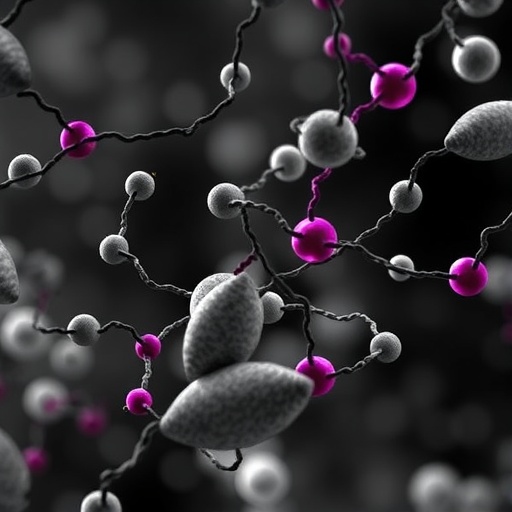In a groundbreaking study published in Cell Death Discovery, researchers have unveiled a remarkable vulnerability in acute myeloid leukemia (AML) linked to the cell cycle regulator MYBL2. This revelation not only deepens our understanding of AML pathogenesis but also opens new avenues for targeted therapeutic intervention against this aggressive blood cancer. The study, spearheaded by Küchler et al., marks a significant leap forward in leukemia research, showcasing how disruption of MYBL2 impairs cancer cell proliferation and survival.
Acute myeloid leukemia is notorious for its complex genetic landscape and resistance to conventional treatments, leading to high relapse rates and poor prognoses. Identifying molecular Achilles’ heels in AML cells remains a critical objective for researchers aiming to develop more effective treatments. The focus on MYBL2, a transcription factor integral to cell cycle progression and DNA replication, has emerged as a pivotal point of interest due to its overexpression in various malignancies and its role in orchestrating cellular proliferation and genomic stability.
The team employed a combination of advanced genomic analyses, gene editing technologies, and cellular assays to comprehensively dissect the role of MYBL2 in AML. Their meticulous experiments revealed that MYBL2 is distinctly upregulated in AML cells compared to normal hematopoietic cells, underscoring its potential as a biomarker and therapeutic target. Functional disruption of MYBL2 through RNA interference and CRISPR-Cas9-mediated knockdown led to pronounced inhibition of leukemic cell growth, highlighting the critical dependency of AML cells on this regulator.
Mechanistically, MYBL2 exerts its oncogenic influence by modulating the expression of genes central to the G2/M phase transition and mitotic spindle assembly. This regulatory network ensures the faithful segregation of chromosomes during cell division, a process often hijacked by cancer cells to sustain relentless proliferation. The data indicated that loss of MYBL2 triggered cell cycle arrest, impaired DNA repair pathways, and induced apoptotic cascades, collectively crippling the survival machinery of AML cells.
One of the study’s captivating findings is the apparent selectivity of MYBL2 inhibition; normal bone marrow cells exhibited a remarkable resilience to MYBL2 suppression, suggesting a favorable therapeutic window. This differential sensitivity posits MYBL2 as a viable cancer-specific vulnerability that could be exploited to minimize collateral damage to healthy tissues, a perennial challenge in oncology treatment paradigms.
Beyond its role in leukemogenesis, MYBL2 was implicated in maintaining the stem-like properties of leukemic stem cells (LSCs), which are often responsible for disease persistence and relapse. Targeting MYBL2 compromised the self-renewal capacity of these notoriously refractory LSCs, offering hope for eradicating the reservoir of cells that evade conventional chemotherapies.
The researchers also conducted nuanced analyses of patient-derived AML samples, corroborating the clinical relevance of their findings. Elevated MYBL2 expression was consistently associated with aggressive disease phenotypes and poorer clinical outcomes. This correlation further cements the prognostic importance of MYBL2 and underscores the urgency of developing MYBL2-directed therapies for AML patients.
Intriguingly, the study delved into the interplay between MYBL2 and cell cycle checkpoint kinases, revealing that MYBL2 acts as a central node integrating cell cycle signals with DNA damage responses. This insight elucidates how AML cells harness MYBL2 to navigate genotoxic stress, thereby evading apoptosis and sustaining malignancy. The dual regulatory functions of MYBL2 position it as a master regulator in AML pathobiology.
From a therapeutic development standpoint, the identification of MYBL2 dependency invites the exploration of small molecule inhibitors or peptide-based agents capable of disrupting MYBL2 function. While direct MYBL2 inhibitors are not yet available, the study propels the imperative to design compounds that can modulate its activity or destabilize its interaction with critical cofactors within leukemic cells.
Furthermore, the research opens the door to combinatorial treatment strategies. MYBL2 inhibition could synergize with existing chemotherapeutics or novel agents targeting complementary pathways such as DNA damage repair, apoptosis, or epigenetic modifications. Such combination regimens may overcome resistance mechanisms and enhance treatment efficacy in AML.
The findings also invigorate the broader field of cancer biology by demonstrating a paradigm wherein cell cycle regulators like MYBL2 transcend their canonical roles and act as oncogenic drivers. This conceptual advance prompts reevaluation of cell cycle factors in other malignancies and encourages the pursuit of cell cycle-targeted therapies beyond AML.
The translational potential of this study is underscored by the feasibility of incorporating MYBL2 expression profiling into clinical diagnostics. Stratifying patients based on MYBL2 status could refine prognostic models and personalize treatment approaches, aligning with the principles of precision oncology.
In summary, the work of Küchler and colleagues highlights MYBL2 as an indispensable regulator and exploitable vulnerability in AML. Their comprehensive investigation offers a promising blueprint for future research and drug development aimed at mitigating the devastating impact of acute myeloid leukemia. With continued efforts, targeting MYBL2 may transition from bench to bedside, heralding a new era in leukemia therapeutics.
As AML remains one of the most challenging hematological cancers, this discovery bears immense significance and hope for patients and clinicians alike. It underscores the power of molecular research to unravel disease intricacies and the relentless pursuit of innovative treatment paradigms in oncology.
Subject of Research: Acute Myeloid Leukemia, Cell Cycle Regulation, MYBL2
Article Title: Cell cycle regulator MYBL2 is a distinct vulnerability in acute myeloid leukemia
Article References:
Küchler, S., Brilloff, S., Schäfer, S. et al. Cell cycle regulator MYBL2 is a distinct vulnerability in acute myeloid leukemia. Cell Death Discov. 11, 470 (2025). https://doi.org/10.1038/s41420-025-02810-4
Image Credits: AI Generated




